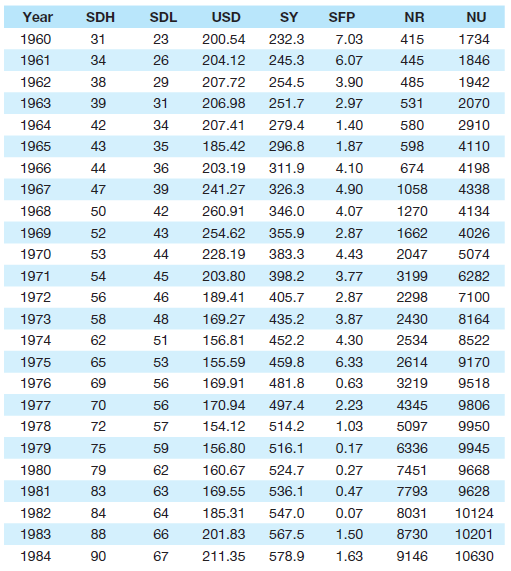In a 1988 article, Josef Brada and Ronald Graves built an interesting model of defense spending in
Question:
In a 1988 article, Josef Brada and Ronald Graves built an interesting model of defense spending in the Soviet Union just before the breakup of that nation. The authors felt sure that Soviet defense spending was a function of U.S. defense spending and Soviet GNP but were less sure about whether defense spending also was a function of the ratio of Soviet nuclear warheads to U.S. nuclear warheads. Using double-log functional form, the authors estimated a number of alternative specifications, including (standard errors in parentheses):
Table 9.1 Data on Soviet Defense Spending
Where:
SDHt = the CIA’s “high” estimate of Soviet defense expenditures in year t (billions of 1970 rubles)
USDt = U.S. defense expenditures in year t (billions of 1980 dollars)
SYt = Soviet GNP in year t (billions of 1970 rubles)
SPt = the ratio of the number of USSR nuclear warheads (NRt) to the number of U.S. nuclear warheads (NUt) in year t
a. The authors expected positive signs for all the slope coefficients of both equations. Test these hypotheses at the 5-percent level.
b. Use our four specification criteria to determine whether SP is an irrelevant variable. Explain your reasoning.
c. Test both equations for positive first-order serial correlation. Does the high probability of serial correlation cause you to reconsider your answer to part b? Explain.
d. Someone might argue that because the DW statistic improved when lnSP was added, the serial correlation was impure and that GLS was not called for. Do you agree with this conclusion? Why or why not?
e. If we run a GLS version of Equation 9.29, we get Equation 9.31. Does this result cause you to reconsider your answer to part b? Explain
Step by Step Answer:











